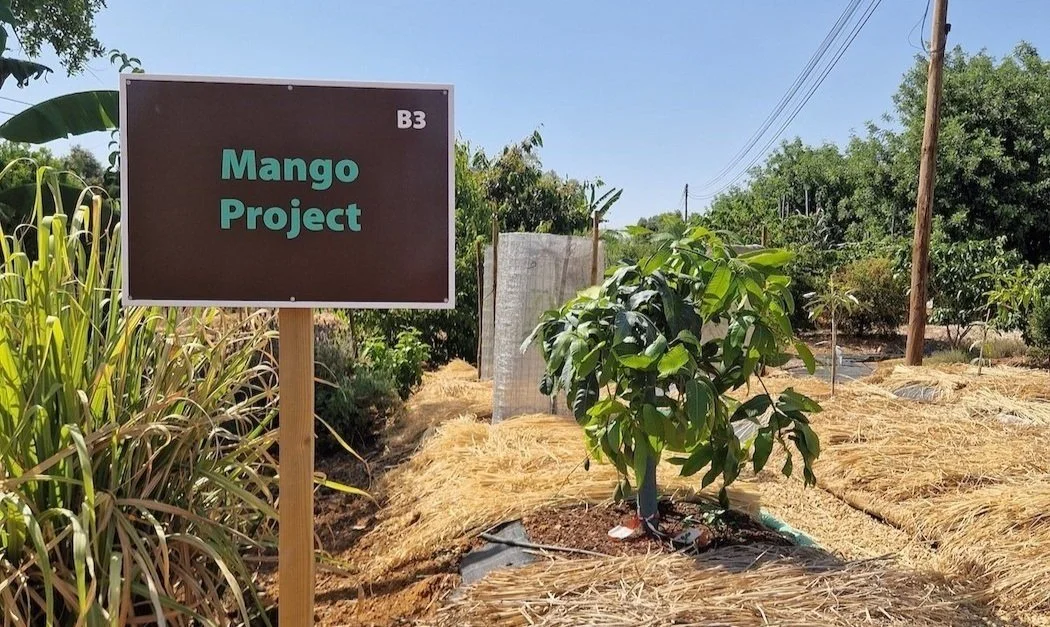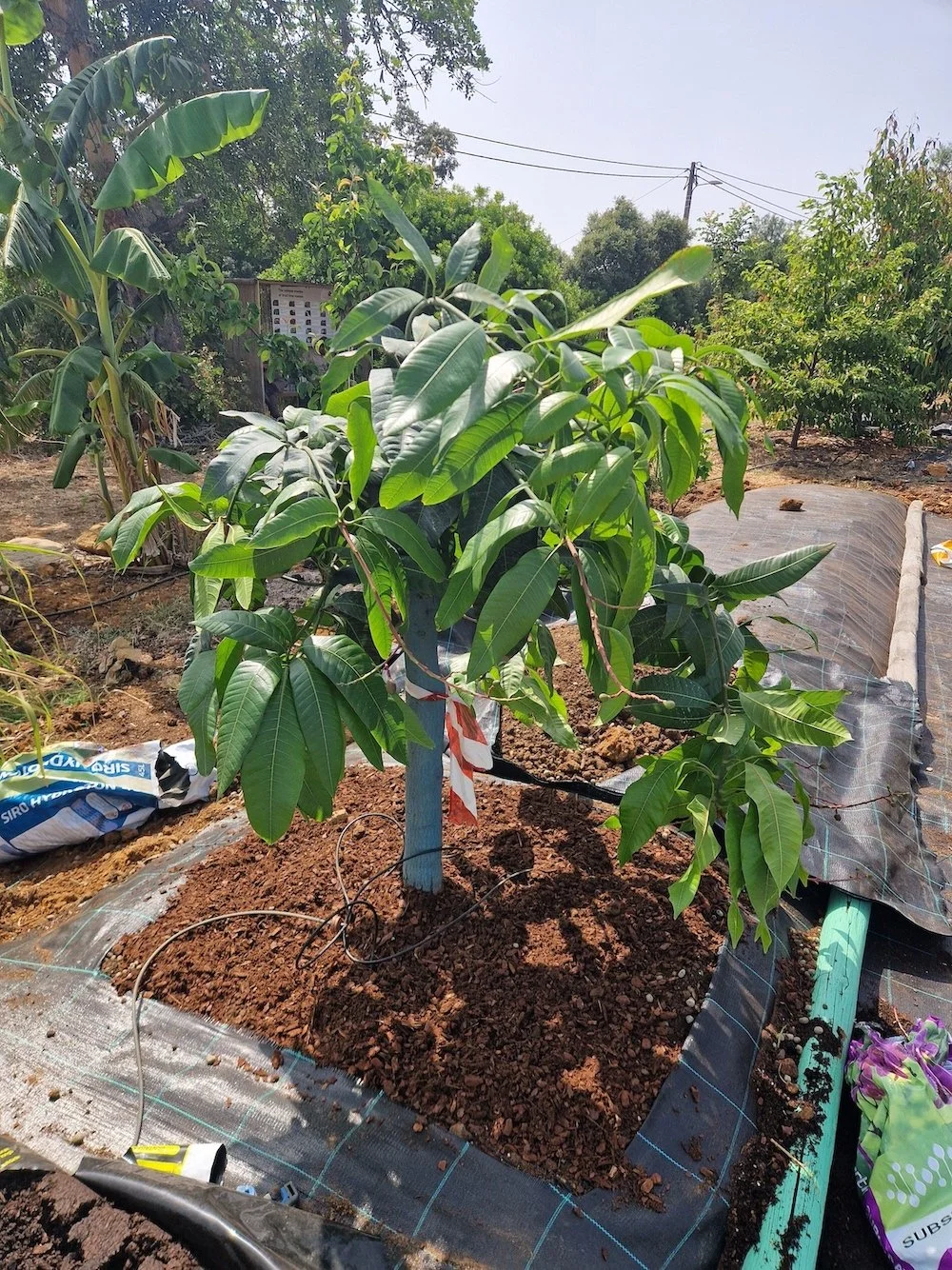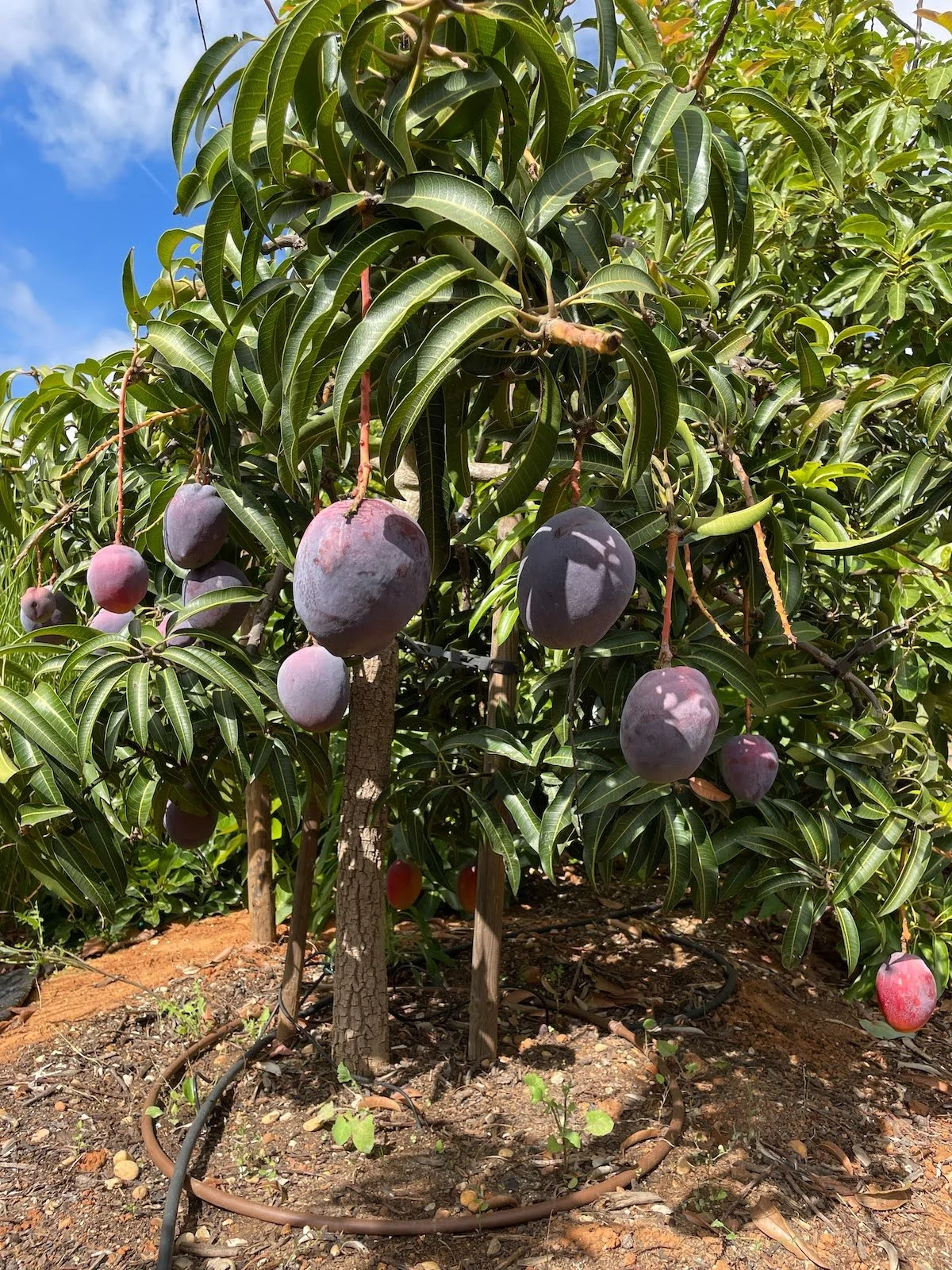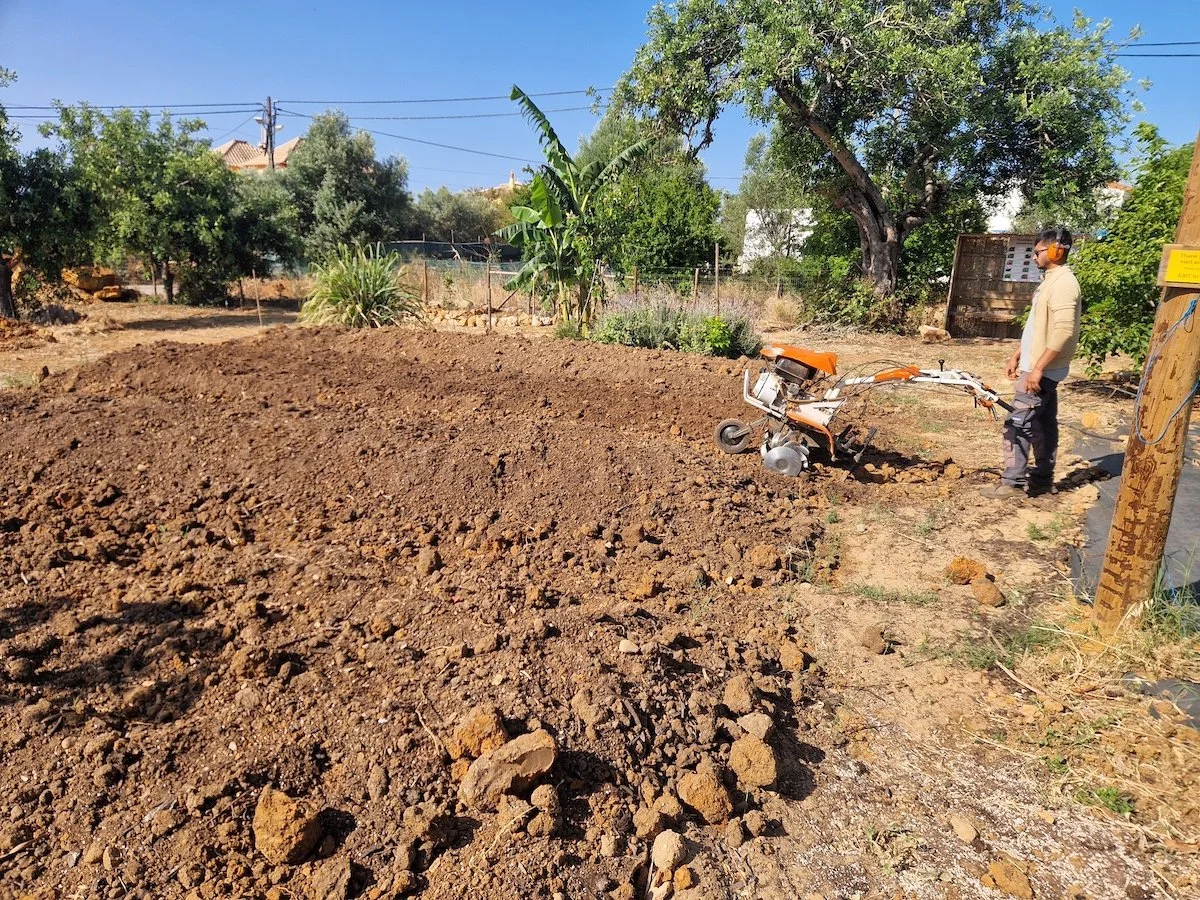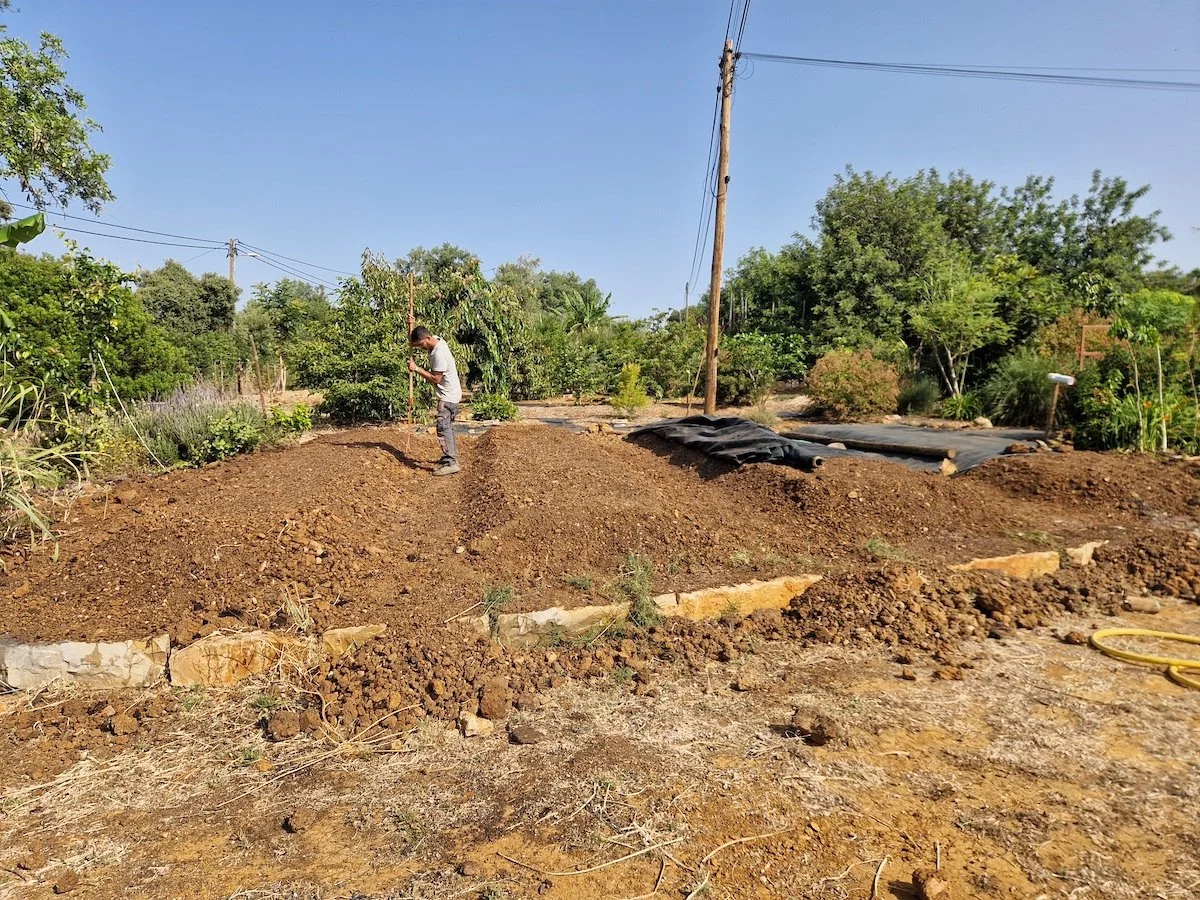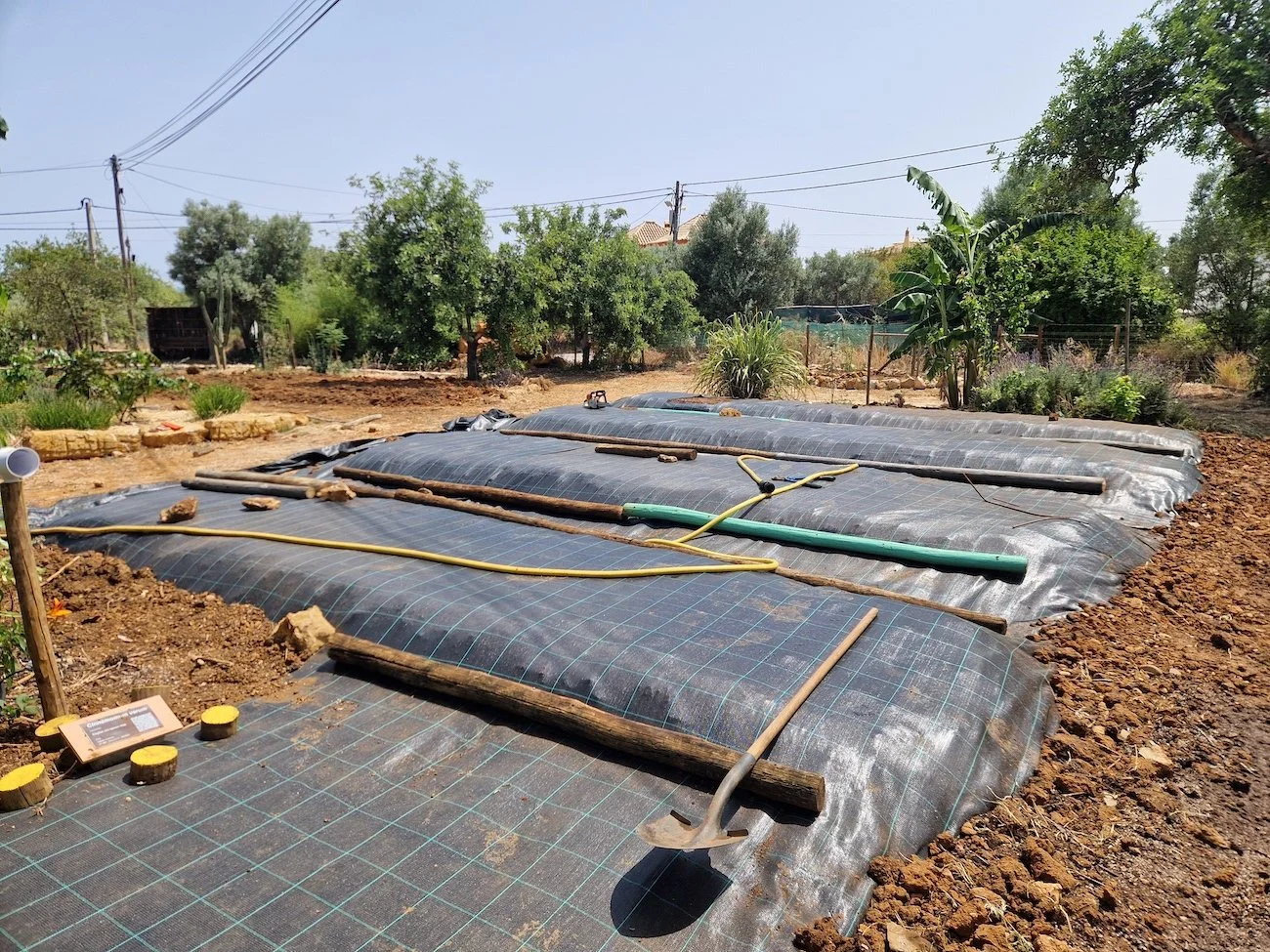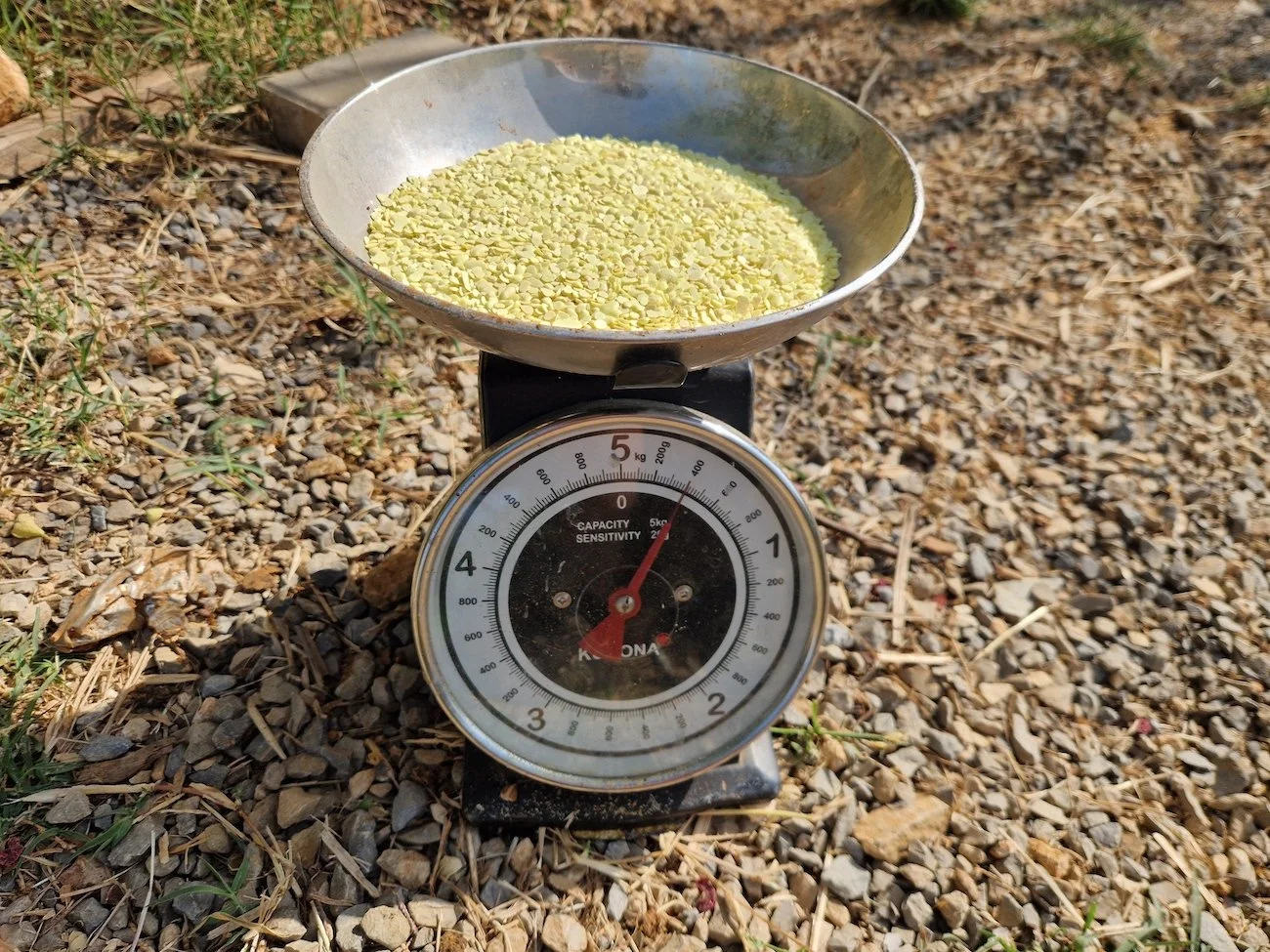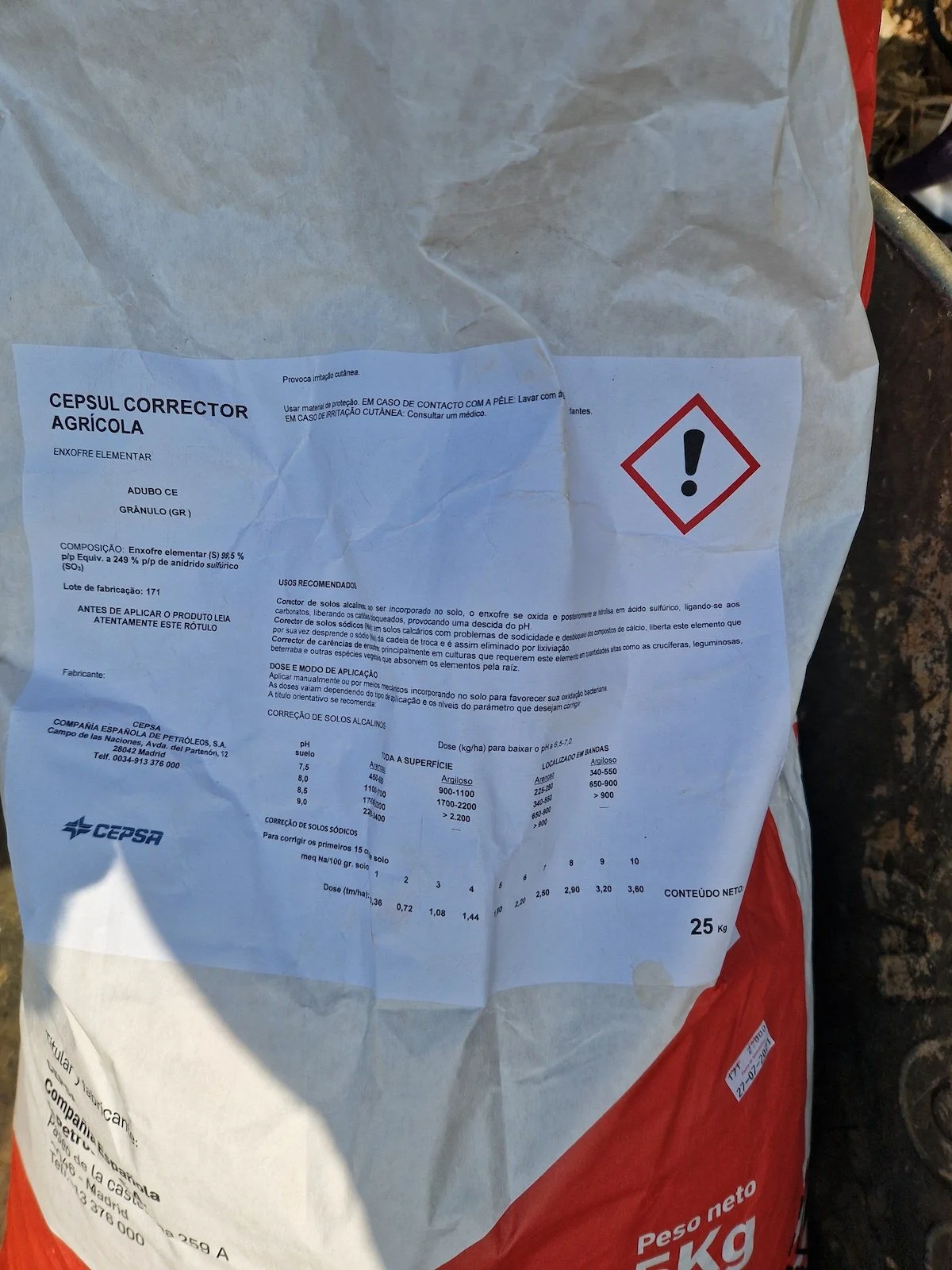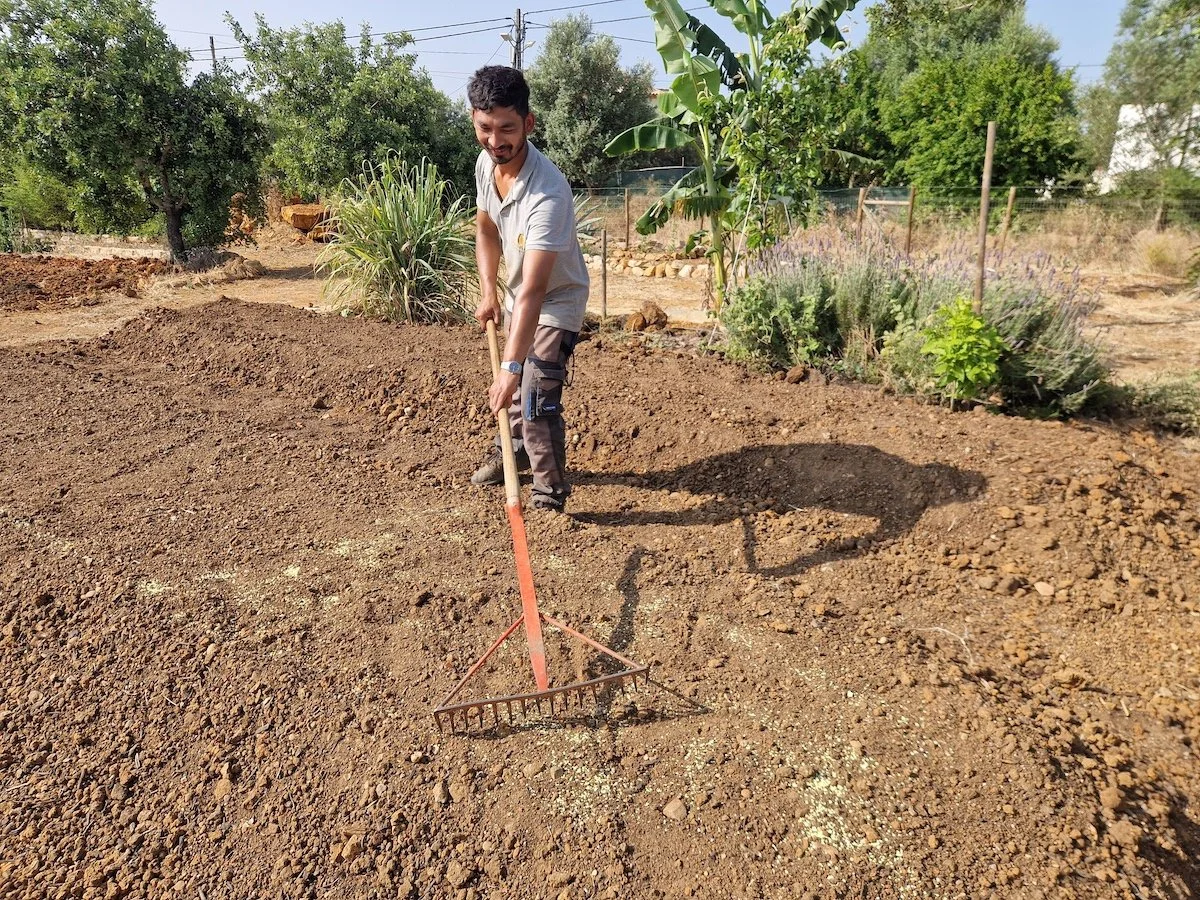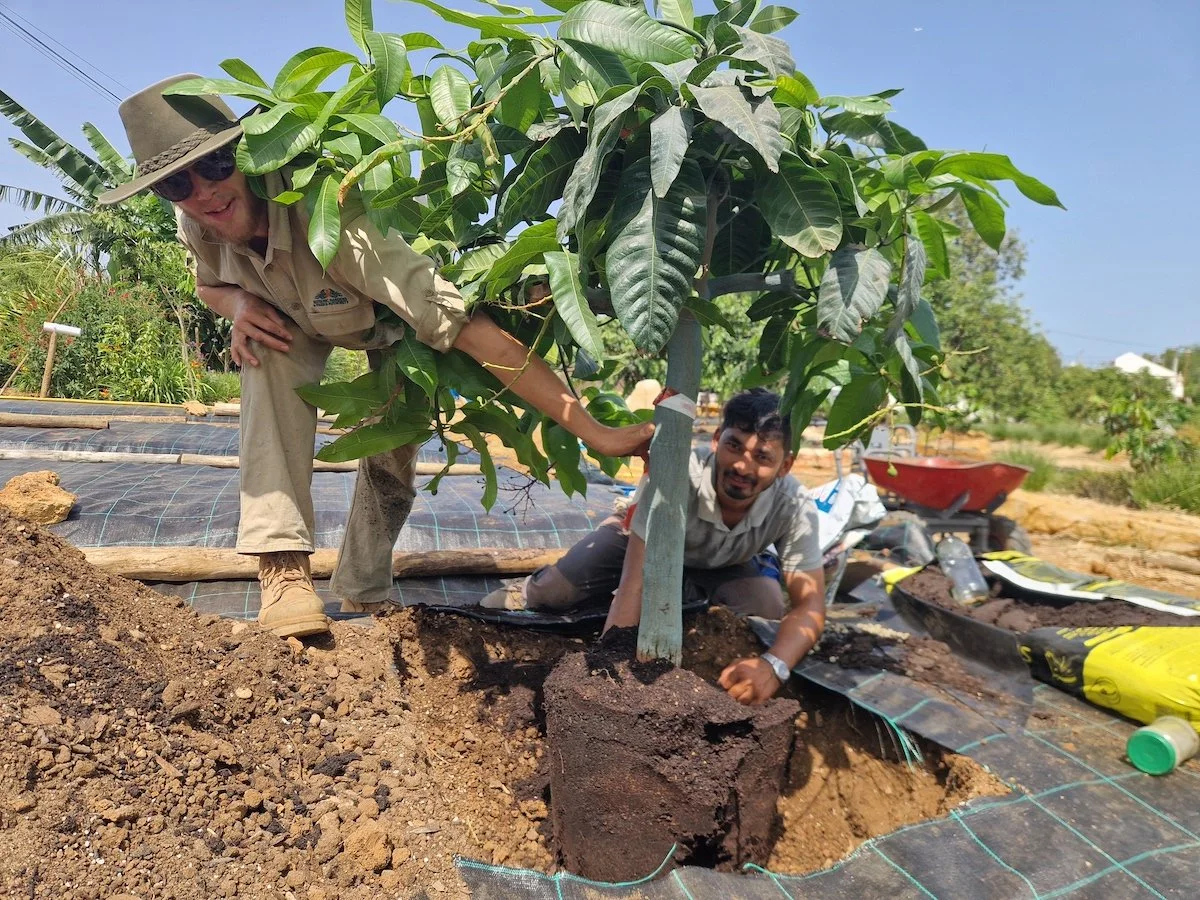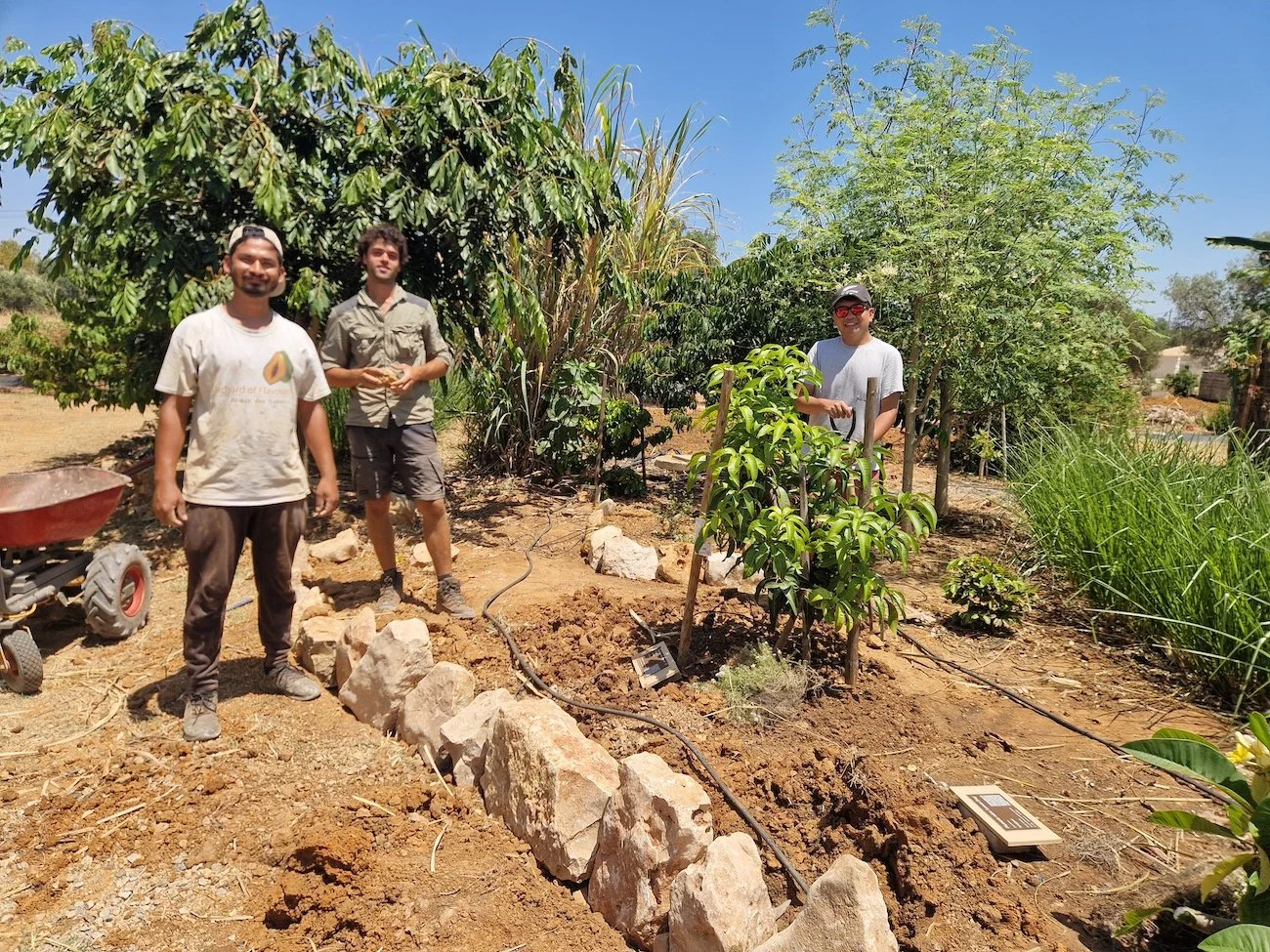The Mango Project
Starting Date: June 1st, 2025
Area: ~65m²
Number of Beds: 4 (1.6m × 7.5m)
Number of Trees: 12 (spaced 2.5m apart)
Background
Various Mangifera indica varieties have been planted throughout the botanical garden with mixed results. Some locations suffered from waterlogging, leading to tree death, while others had unsuitable soil pH (too alkaline), resulting in poor growth and low vigour. These challenges produced low-quality fruit and pose significant limitations for cultivating rarer or more sensitive Mangifera species.
In densely planted food forest areas, some mango trees thrived vegetatively but failed to bear fruit due to insufficient sunlight.
In response to these challenges, the Mango Project was established to provide more controlled conditions and support successful mango cultivation in the Mediterranean climate regions, not only in the south of Portugal and Spain, but also in countries like Italy, Greece and Turkey, as well as other regions outside of Europe, like California, USA, or the west of Australia.
Sun Exposure
Mango trees require full sun, a minimum of 6 but ideally 8 hours of direct sunlight daily, for healthy growth and fruiting. We selected an open, south-facing area free from competing tall evergreen trees. Four raised rows were constructed along a North–South orientation to ensure uniform light exposure. Maintaining a minimum of 6 hours of direct sunlight per tree is critical.
Wind Protection
Mango trees are sensitive to strong winds. The chosen site is naturally sheltered, with mature trees on the north-western side offering protection from prevailing winds.
Soil Preparation
Context: Heavy clay soil with alkaline pH (7.8)
These challenging conditions required us to first prepare the site, by:
Improving Drainage
To reduce waterlogging risks and support healthy root development:
The soil was decompacted to a depth of 80cm using a digger.
Raised beds (approximately 35cm high) were constructed along the slope to encourage water runoff, avoiding excessive rainwater retention.
Amendments were added to improve soil structure (approximate % by volume):
20% Plain compost
5% Peat moss
10% Sandy soil
Reducing Soil pH
Mango trees prefer slightly acidic soil. To achieve this, we implemented several steps:
Incorporated peat moss and a high percentage of plain compost.
In two planting beds, applied 100 g of granular elemental sulfur per m².
At planting, each tree was given 100 L of an acidic substrate (pH 4.5). In our botanical garden, we often use an orchid substrate with low pH. Its fine pine bark improves drainage.
Further Experiments
For varieties planted in duplicate, additional experiments are underway. These include the use of highly acidic orchid substrate, formulated for both enhanced drainage and sufficient moisture retention. These tests aim to identify optimal conditions for future planting practices across a broader range of Mangifera species and varieties.
Varieties and Species in the Mango Project
Mangifera indica ‘Harvest Moon’
Mangifera indica ‘Sensation’
Mangifera indica ‘Osteen’
Mangifera casturi
Mangifera laurina
🥭 Mango Growing Guide
Don’t forget to check out our Mango Growing Guide for the Mediterranean article, where we summarized what we understand as good and effective practices for a successful mango cultivation in regions like southern Iberian Peninsula, southern Italy, California, among others, based both on our practical experience at the Orchard of Flavours and on advice by the best mango growing experts.
This article was compiled by Miguel COTTON. If you have any questions or suggestions, do not hesitate to contact us: miguel@orchardofflavours.com

